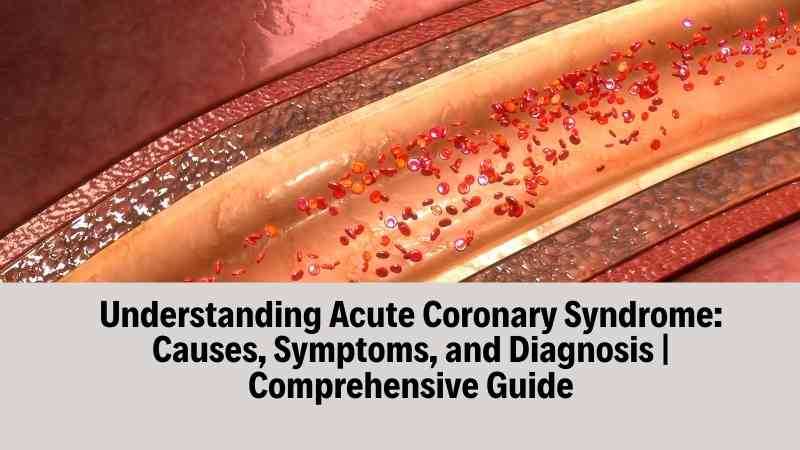In the intricate tapestry of ACS management, pharmacotherapy assumes a pivotal role, offering a diverse array of medications aimed at alleviating symptoms, preventing complications, and improving outcomes. From thrombolytics to statins, each drug class exerts its unique therapeutic effects, synergistically combating the scourge of ACS. Let’s delve into the pharmacological armamentarium:
Thrombolytics:
- Purpose: Thrombolytics, also known as clot busters, play a crucial role in ACS management by rapidly dissolving blood clots within coronary arteries, restoring blood flow to the heart muscle.
- Common Drugs: Anistreplase, Reteplase, Streptokinase
- Emergency Use: Thrombolytics are administered urgently in cases of acute myocardial infarction (heart attack) to minimize myocardial damage and preserve cardiac function.
Nitrates:
- Purpose: Nitrates facilitate the temporary widening of blood vessels (vasodilation), reducing cardiac workload and improving blood flow to the heart muscle.
- Common Drug: Nitroglycerin
- Symptomatic Relief: Nitrates provide rapid relief from angina symptoms, including chest pain and discomfort, making them invaluable in the acute management of ACS.
Antiplatelet Drugs:
- Purpose: Antiplatelet agents prevent the formation of blood clots by inhibiting platelet aggregation, reducing the risk of recurrent thrombotic events.
- Common Drug: Clopidogrel
- Long-Term Use: Antiplatelet therapy is recommended as a cornerstone of long-term ACS management to prevent secondary cardiovascular events and promote vascular health.
Beta Blockers:
- Purpose: Beta blockers exert their therapeutic effects by reducing heart rate, myocardial oxygen demand, and blood pressure, thereby alleviating symptoms and improving cardiac function.
- Common Drug: Metoprolol
- Cardioprotective Effects: Beta blockers confer numerous cardiovascular benefits, including antiarrhythmic properties and the prevention of adverse cardiac remodeling following ACS.
Angiotensin-Converting Enzyme (ACE) Inhibitors:
- Purpose: ACE inhibitors enhance blood flow to the heart and reduce cardiac workload by blocking the conversion of angiotensin I to angiotensin II, a potent vasoconstrictor.
- Common Drug: Lisinopril
- Renoprotective Effects: ACE inhibitors offer renoprotective benefits in addition to their cardioprotective effects, making them invaluable in the management of ACS patients with concomitant renal dysfunction.
Angiotensin Receptor Blockers (ARBs):
- Purpose: ARBs exert their therapeutic effects by antagonizing the effects of angiotensin II, thereby lowering blood pressure and reducing cardiovascular morbidity and mortality.
- Common Drugs: Irbesartan, Losartan, Telmisartan
- Blood Pressure Management: ARBs are commonly prescribed for patients with ACS and hypertension, offering superior blood pressure control and cardiovascular protection.
Statins:
- Purpose: Statins inhibit the enzyme responsible for cholesterol synthesis, reducing LDL cholesterol levels and stabilizing atherosclerotic plaques, thereby lowering the risk of cardiovascular events.
- Common Drug: Atorvastatin
- Cardioprotective Effects: Statins exert pleiotropic effects beyond cholesterol lowering, including anti-inflammatory and antioxidant properties, making them indispensable in ACS management.
Surgery
In the intricate landscape of ACS management, surgical interventions play a pivotal role, offering definitive therapies aimed at restoring coronary blood flow, alleviating symptoms, and preventing recurrent cardiovascular events. From angioplasty and stent placement to coronary artery bypass grafting (CABG), each surgical procedure embodies a unique approach to revascularization, tailored to the individual patient’s clinical presentation and anatomical substrate. Let’s delve into the surgical armamentarium:
Angioplasty and Stent Placement:
- Procedure: Angioplasty, also known as percutaneous coronary intervention (PCI), involves the mechanical widening of a narrowed or obstructed coronary artery using a balloon-tipped catheter. Subsequently, a stent—a small, mesh-like tube—is deployed to scaffold the artery, preventing restenosis and maintaining luminal patency.
- Purpose: Angioplasty and stent placement serve as frontline therapies for ACS, rapidly restoring coronary blood flow and relieving myocardial ischemia. Stents also prevent further clot formation and ensure long-term vessel patency.
- Advantages: This minimally invasive procedure offers numerous advantages, including shorter hospital stays, faster recovery times, and improved quality of life for ACS patients.
Coronary Artery Bypass Grafting (CABG):
- Procedure: CABG involves harvesting a vein or artery from another part of the body, such as the thigh, arm, or mammary vein, and using it to create a bypass graft that circumvents the blocked or narrowed coronary artery. This creates an alternative route for blood flow to reach the heart muscle.
- Indications: CABG is typically reserved for patients with complex multivessel coronary artery disease (CAD) or those unsuitable for PCI, such as those with heavily calcified or diffuse lesions.
- Purpose: CABG offers durable and comprehensive revascularization, addressing multiple coronary lesions simultaneously and providing long-term symptom relief and improved prognosis for ACS patients.
Comparative Considerations:
- While both angioplasty with stent placement and CABG are effective revascularization strategies for ACS, the choice between the two depends on various factors, including the extent and severity of coronary artery disease, patient’s comorbidities, anatomical considerations, and procedural risks.
- In cases of single-vessel disease or less complex lesions, angioplasty with stent placement may be preferred due to its minimally invasive nature and shorter recovery times. However, for patients with extensive CAD or those requiring multivessel revascularization, CABG offers superior long-term outcomes and durability.
Disclaimer-For informational purposes only. Consult a medical professional for advice.
ALSO READ-Explore our blog for tips on maintaining heart health and reducing ACS risk factors.
